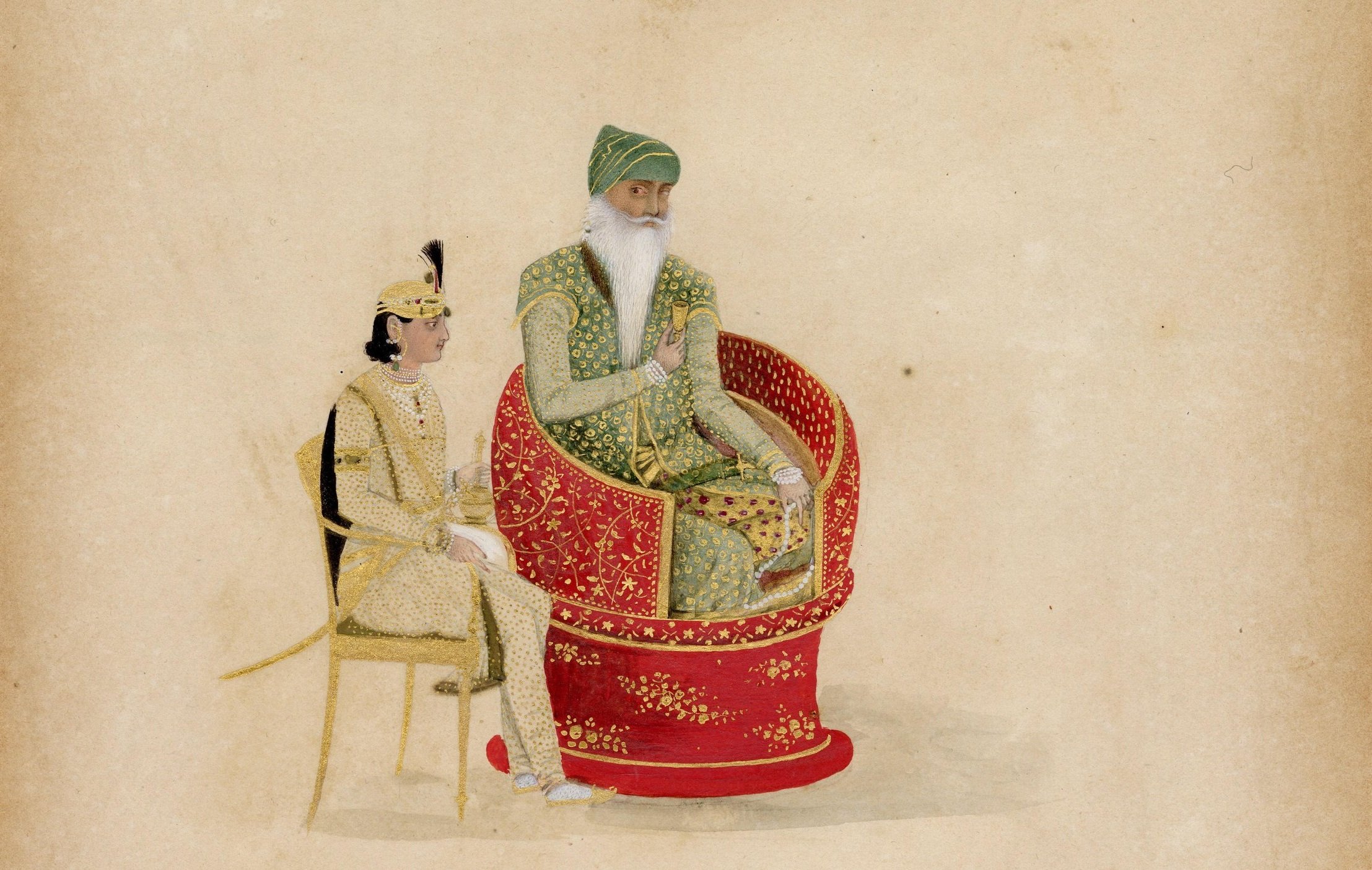London’s Wallace Collection Expounds On TheLife And Times Of A Sikh Warrior King
Photo from the Toor Collection (Photo courtesy of The Wallace Collection)
LONDON — Ranjit Singh, known as the “Lion of Punjab,” was responsible for the creation of the Sikh Empire in 19th century north India. A skilled warrior and revered king, as well as the first maharajah of the Sikh people, Singh is one of the most important figures in Sikh history.
Now, his life and reign as a ruler are the subject of the exhibition “Ranjit Singh: Sikh, Warrior, King” at London’s The Wallace Collection.
The Wallace Collection is known in part for its vast weapons collections. This exhibition is no different. After a brief introduction on Ranjit Singh’s rise to power, the exhibition opens on a hallway of armor and weapons used by Ranjit Singh and his army.
READ: Why Sikhs Celebrate The Festival Of Baisakhi
Among the collection are gold-adorned swords, decorated rifles and “quiot” — or “chakar” — circular projectile weapons that were thrown to slice open the skin of enemies. Used notably by Sikh armies during this period, the quiot has its origins in both major Hindu scriptures, where it was used as a weapon by celestial warriors.
A standout display contains two turban helmets, built to accommodate the Sikh turban and top-knot. These were worn by cavalry members and are believed to have been introduced sometime around 1831. By that point, the empire’s army was being led in part by French generals.
The exhibition spans five small rooms and is largely laid out chronologically, from Ranjit Singh’s rise to the throne to his successors and the Sikh Empire’s ultimate demise.
During Ranjit Singh’s reign, the Sikh Empire was a thriving, cosmopolitan civilization. Singh himself was known for being tolerant and accepting as a ruler, even to those of other religions. While a wholly devout Sikh, Ranjit Singh is said to have visited holy sites for other faiths and allowed people under his rule to practice their own religions. This tolerance extended everywhere but the battlefield; throughout his rule, the exhibition says he was “almost obsessive” about continued conquest and amassing riches.
Amass riches he did: Perhaps most notably, Ranjit Singh was given the Koh-i-Noor, one of the largest diamonds in the world, in return for providing hospitality to its previous owner. Ranjit Singh was one of the final owners of the diamond before it was ceded to Queen Victoria. It remains one of the crown jewels of the United Kingdom to this day, though various governments and the Taliban have claimed rightful ownership of it.
All the exhibition’s artistic representations from the period showcase a life of luxury for Ranjit Singh’s court and people. Textile production and trade meant the people wore lavish fabrics, and they often adorned themselves with jewels and weapons too. A miniature painting depicting over a hundred members of the royal court shows each person in the possession of luxury, decked out in clothes of every color and variety.
Compared to the rest of his court, Ranjit Singh dressed modestly. In one watercolor portrait, he’s featured with court favorite Hira Singh. Hira Singh is dressed in gold splendor, sporting jewelry and finery of all kinds, and Ranjit Singh is dressed in a much more muted green. He seems almost demure in this portrait, curled up in his basket throne with his legs crossed.
That isn’t to say he went entirely without finery himself. In fact, one of the highlights of the exhibition is Ranjit Singh’s throne, shaped like a lotus flower and covered with embossed gold.
Singh was, in many ways, a study in contradictions. He was a benevolent conqueror, a modest man of riches, a staunch but tolerant Sikh. He unified Punjab during his time as a ruler, and he was beloved by his people for that.
The exhibition presents a clear affection for Ranjit Singh, an opinion shared seemingly by all who know him or his story.
When he died in 1839, he was mourned greatly. A somber painting in the exhibition marks the event of his cremation, in which four of his wives and seven maidservants agreed to be cremated alive with him. This ritual, “sati,” was a historical custom common among Hindu communities. It was condemned by Sikh Guru Amar Das in the 16th century and banned by the British in 1829 but was practiced well into the 19th century.
The other two sections in the exhibition present information about Westerners who became part of Ranjit Singh’s army and the successors after his death.
Men came from all over the world, including Europe and the U.S., to become commanders, governors and more in the Sikh Empire. To prove their loyalty, these men had to adapt some of the core tenets of Sikhism, including not cutting their hair and wearing a turban as head covering.
There were a few maharajas after Ranjit Singh’s death, including his son and grandson. This period was marked by instability and assassinations of leaders.
These rulers ultimately had less success staving off the British Empire, and the region was conquered by the British East India Company a decade after Ranjit Singh’s death.
“Ranjit Singh: Sikh, Warrior, King” is on view at The Wallace Collection now through Oct. 20.
Jillian Cheney is Religion Unplugged’s Senior Culture Correspondent. She writes about film, TV, music, art, books and more. Find her on Twitter @_jilliancheney.

